Describing what it is like to travel South America on a motorcycle is easier said than done.
In 2016 I set off on my KTM 1190 to explore the continent, and spent a year and a half trying to get as much of it as I could, grinding almost 70000km.
Perhaps the best way to tell a year and a half of travelling through such different countries in a few lines is to answer the questions I am always asked about this beautiful part of the world.
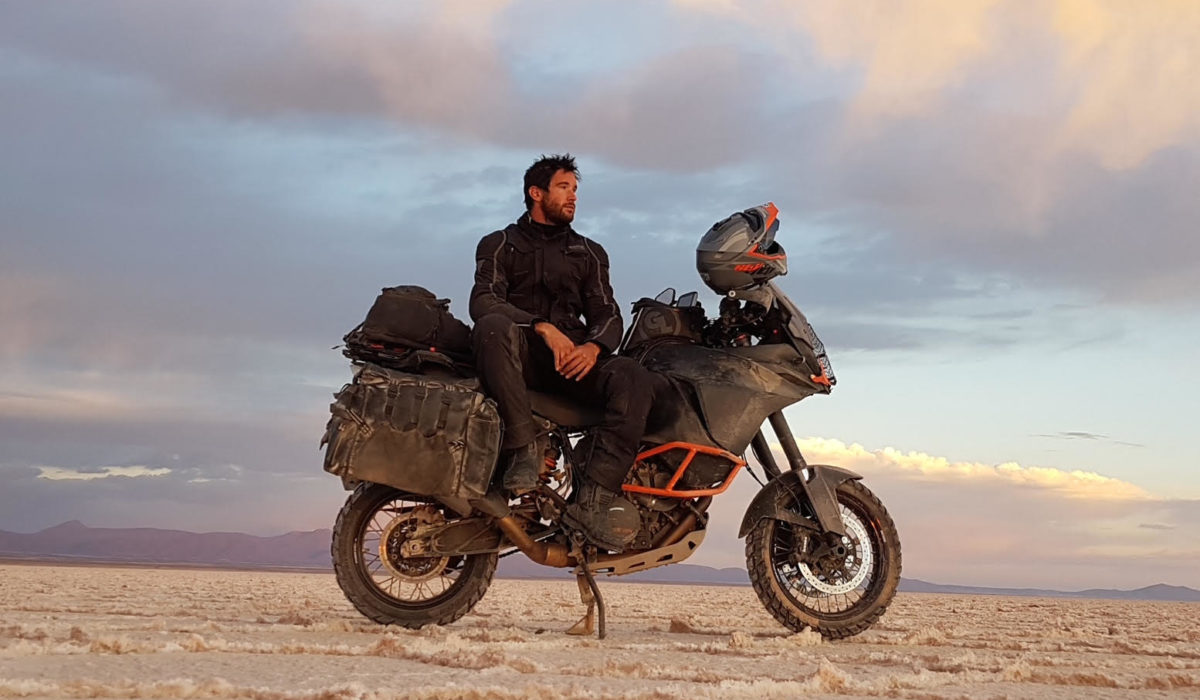
Which is the most beautiful country in South America?
This is certainly the most popular question, but obviously based on a very personal point of view.
In any case, the country that fascinated me the most in South America was definitely Bolivia.
Despite its somewhat peculiar history, Bolivia is certainly one of the most impressive countries with wealth and natural resources in the whole continent; the nation unfortunately suffers from not indifferent socio-political conflicts within it and to be one of the two unfortunate ones not to have contact with the ocean directly.
Despite the past, a strong indigenous tradition persists in Bolivia, which is obviously in stark contrast to the westernizing progress of the rest of the continent.
Bolivia is also the most incredible country as far as the road situation is concerned.
Every time you get in the saddle, you never know how it will end up.
In Bolivia you can find roads with perfectly smooth asphalt and curves that seem to be designed by a painter. In the same way you may come across roads that have been totally abandoned for years (like the famous Carretera de la Muerte), or roads completely made of mud.
Sometimes there are not even roads, like in the park of the Colored Lagoons of Edoardo Avaroa, or like on the wonderful salt lake of Uyuni, where you are free to run around at full speed.
In short, mud, potholes, endless road works and every possible and imaginable danger, are just some of the things you can meet driving a motorcycle in this colorful country.
80% of Bolivia’s inhabitants are indigenous, so it is normal to see ladies dressed in traditional clothes (cholitas), people walking with Llamas and Alpacas and people who still speak Quechua, one of the traditional languages of the country.
The women carry the babies on their shoulders, wrapped in a canvas of bright colors, typical of the indigenous South American tradition.
Its most famous city (and one of the highest cities in the world) La Paz, is a truly incredible place; only by looking at it from above you can really appreciate its stunning structure. A concentration of houses, markets, cars, people, colors, smells, sounds and vibrations, all kindly placed in a valley surrounded by mountains 6000 meters high. A spectacle that has no equal in the world.
Trying to navigate your motorcycle in a city like this is a difficult task to say the least. A little for the traffic, and a little for the morphology of the city, you may find yourself having serious difficulties in
manoeuvring a vehicle. Another important factor, with regard to La Paz, are the continuous civil protests and the markets that, absolutely unmarked, can block entire roads for hours and hours and
therefore create traffic problems for the whole city.
Bolivia is not only unique in terms of culture, but also geographically; half of its borders with Argentina, Chile and Peru, where it is practically all above 3000 meters above sea level, and on the
other, it borders with Brazil, where it is completely tropical and easily reaches 40 degrees with 95% humidity.
This makes Bolivia one of the toughest countries in South America to travel by motorcycle.
In terms of road safety, of course, it is one of the most intense places in South America.
The “law of the strongest” still applies on the roads; I have found myself face to face several times
with overtaking trucks, which forced me off the road at 100km/h.
Another common practice is uphill overtaking, even in blind bends, which obviously causes
discomfort to both sides.
In short, there are practically no labels of road respect for motorists.
In addition to the road obstacles, I had to physically get used to the roughness of the country,
especially the altitude, which for a couple of weeks did not allow me to breathe and sleep normally.
Another particular detail of Bolivia is the difficulty in getting petrol.
The octanage, when it goes well, is about 82 and not all petrol stations are willing to sell fuel.
In fact, there are laws that prohibit the sale of vehicles with foreign license plates. Only some petrol
stations allow this, and others instead make you pay three times what a Bolivian would pay (the
price is always very cheap compared to European standards).
Despite all these roughness and inconveniences, I really had a fantastic experience in Bolivia,
especially with its people.
The country still has something magical and wild, which in my opinion other nations have lost a little
bit.
And, as always, the hardest things to conquer are the ones that give us the most satisfaction in the
end.
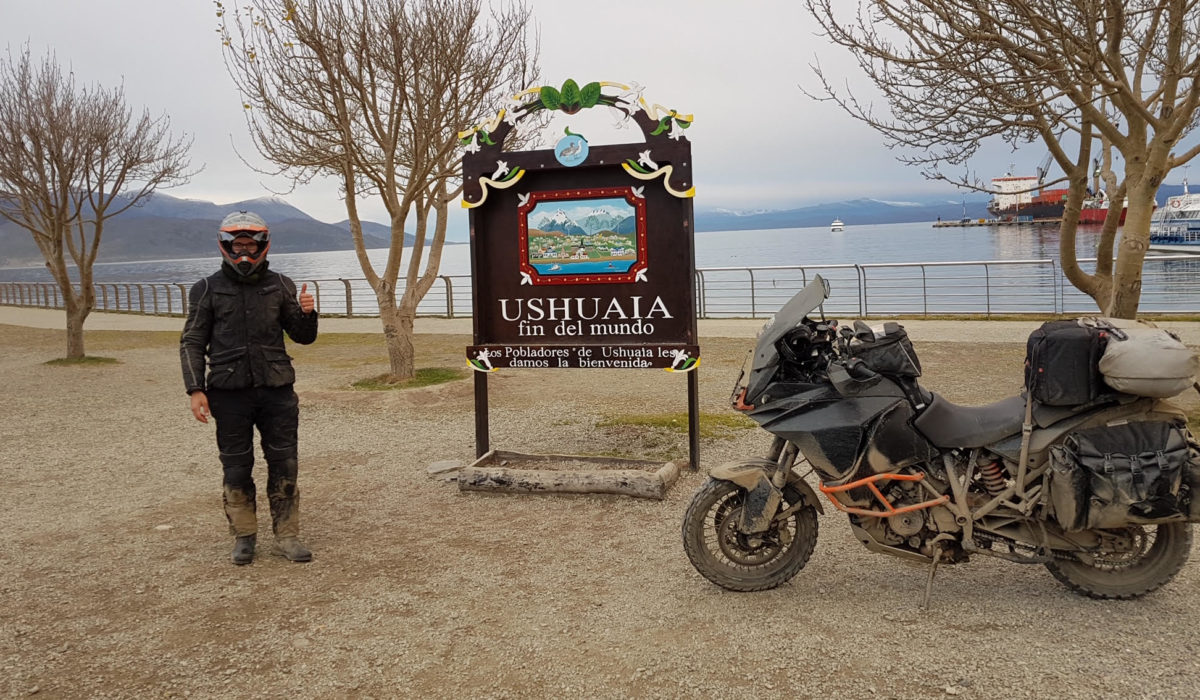
Which country surprised you the most?
Without a shadow of a doubt Ecuador.
Definitely the most underrated country on the continent, it offers an array of incredible natural,
cultural and culinary beauty.
The streets have almost all been paved recently, almost no holes, the cities are generally clean (for
South American levels) and the people are very relaxed and friendly.
In particular my favorite city was definitely Cuenca, a little gem crossed by 4 rivers, on the slopes of
one of the highest mountains in the country.
Cuenca, besides being beautiful, is one of the most motorcycle-friendly places in the country. The
passion for motorcycling here, no joke!
Ecuador also has 90 volcanoes (and one of the largest seismic aquifers in Latin America) and 3
different ecosystems.
The advantage of being so “small” is that you can reach almost any place in the country in a
maximum day. From the coast to Amazonia, or from north to south, all in less than 1000 km.
The structure of its roads , therefore varies a lot, going from the coast, for example, where you find
yourself in tropical landscapes, surrounded by banana and cocoa plantations, to the first mountain
range, where you can reach a height of 4000m.
In the center of the country, around 2800 meters high, you can admire its capital, Quito, in a
beautiful mountain setting.
Going even further inland, you can meet the second mountain range, much colder and more humid,
which ends in the Amazon zone at totally tropical temperatures.
Apart from being a fantastic country for motorcycling, Ecuador also offers one of the most beautiful
places in the world in general in my opinion: the Galapagos Islands.
A tropical paradise and, at the same time, a marine and biodiversity reserve unique in the world;
Darwin didn’t choose this place for nothing to base his theory of evolution!
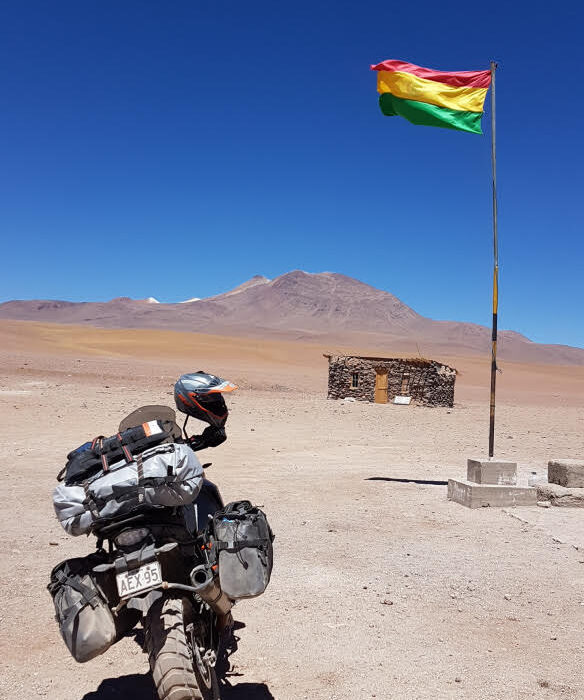
The worst place?
Honestly speaking, you cannot generalize and point the finger at a particular country or place.
Usually this kind of classification is made according to the experiences accumulated, so let’s say that
my worst memories are more related to a specific event, more than to a place.
Without a shadow of a doubt, the worst day of my trip was during my passage to Argentina on Ruta
40.
I found myself driving along the famous road that connects the north to the south of the country,
skirting the Andes, during the late autumn, so with maximum temperatures around 2-4 degrees
Celsius.
The day, as it was born, didn’t seem to reserve unexpected surprises; wake up, breakfast, load the
motorcycle and ride a “little piece” of road of about 600km.
After the first 60km, under the water, I found myself cold to cover another 130km in the dry, until I
reached a 80km stretch of road, completely made of mud (frozen); the road was all loose earth and
the only viable part was in the middle, where the grooves of the tyres of the cars had flattened the
mud enough to make it completely compressed.
I entered the ground at 70km/h and it didn’t take long to realize that the ground had unfortunately
been wet by rain and, because of the cold, had frozen, creating a layer of ice on the surface. After a
few seconds the motorcycle started to skate violently both front and rear, throwing me to the
ground and knocking me down on my back.
The impact was hard but I got up just a little bit dazed, fortunately, trying to understand what had
happened and looking around to see if there was someone to help me lift the motorcycle.
The peculiarity of the Argentine pampa is that it is immense and completely desolate, so thank
goodness I didn’t break anything, because obviously I was completely alone.
I was able to lift the motorcycle by myself and continue, this time with caution, until the end of the
80 km of frozen earth.
The motorcycle was just a bit dirty but it didn’t seem to have received any major damage, apart from
a broken windscreen.
Suddenly the road turned into an endless expanse of black pebbles.
There were so many stones that the wheels sank almost completely into them, like sand, and made
it difficult to handle my 300kg motorcycle at speed. The front end was moving like a madman, as if I
were trying to hold a bull by the horns.
At one point the flat road became a steep descent.
In a few moments I found myself sinking into the pebbles and watching the steering close inexorably
in front of my eyes.
The slip was inevitable and this time I was trapped under the motorcycle.
Obviously, given the position, the weight of the motorcycle and the fact that I was downhill, I
couldn’t free my foot from under the motorcycle (which, thank goodness, was protected by the
boots).
After a 10 minutes of pseudo “Greek Roman struggle”, I managed to get back on my feet.
The bruises were now starting to be felt but I certainly couldn’t stay there, in the middle of nowhere,
crying or yelling about what happened.
Having resumed the journey, this time with much more caution, the asphalt finally began again.
I realized that the motorcycle was starting to respond badly with the rear suspension.
I stopped to see what had happened and, according to Murphy’s famous “if things can get worse
they will” law, I realized that the rear shock absorber had exploded.
Most of the oil had leaked out of the monoblock and the motorcycle was only on the road because
of the spring.
With still a 250km stage to complete, I decided to get back on the road anyway, stopping just for a
coffee first at the first petrol station.
After having filled up the tank, with motivating caffeine and gasoline, I jumped on the saddle again
and, after 10 meters with the motorcycle on, I realized that something was wrong: I looked at the
back wheel and, with sincerely little astonishment, seen the disastrous day, I saw that I had a flat
tire.
They always say that you should never give up and keep going in the face of adversity…
Well, at that point I decided to stop and spend the night in this remote village in Argentina.
When it’s not turning…

What’s the best place to ride a motorcycle?
It’s hard to determine one place in particular. There are really a lot of beautiful and unique places in
the whole continent that is impossible to choose one.
Definitely Chilean Patagonia and the Carretera Austral (the road that crosses the southern part of
Chile) are among the highlights, not only of my trip, but of my life in general!
Another place that left me speechless is certainly the Lençois Maranhense, in Brazil; a desert of
150km of white dunes, full of freshwater lagoons, close to the ocean. Simply spectacular.
The colorful lagoons and the Salar de Uyuni in Bolivia also deserve to be mentioned; lunar
landscapes, in a unique and still unspoilt setting at 4300 meters above sea level.
The most dangerous place to ride a motorcycle?
In this sense, I feel I have to distinguish this answer in two parts.
The country that has the greatest danger in terms of road conditions, natural disasters and careless
motorists is undoubtedly Peru.
A country that has 3 mountain ranges, one of which is about 6000 meters high, the deepest canyon
in the world and one of the most seismic zones on the planet, can only offer strong emotions.
Its inhabitants also tend to drive very aggressively, especially in big cities, where the traffic becomes
very intense.
Collisions between vehicles, in this sense, are the order of the day.
Road safety is many times precarious and the absence of adequate care on the part of drivers makes
the country completely “severe”.
The other country which, on the other hand, boasts of rather abnormal dangerousness, due this
time to the high percentage of crime, is Brazil.
Also in this case, the worst situations are to be found in large cities or in its vicinity, where assaults
for theft occur more frequently.
Nevertheless, during my three months in the country, I have not encountered any problems of this kind.
Was it luck?
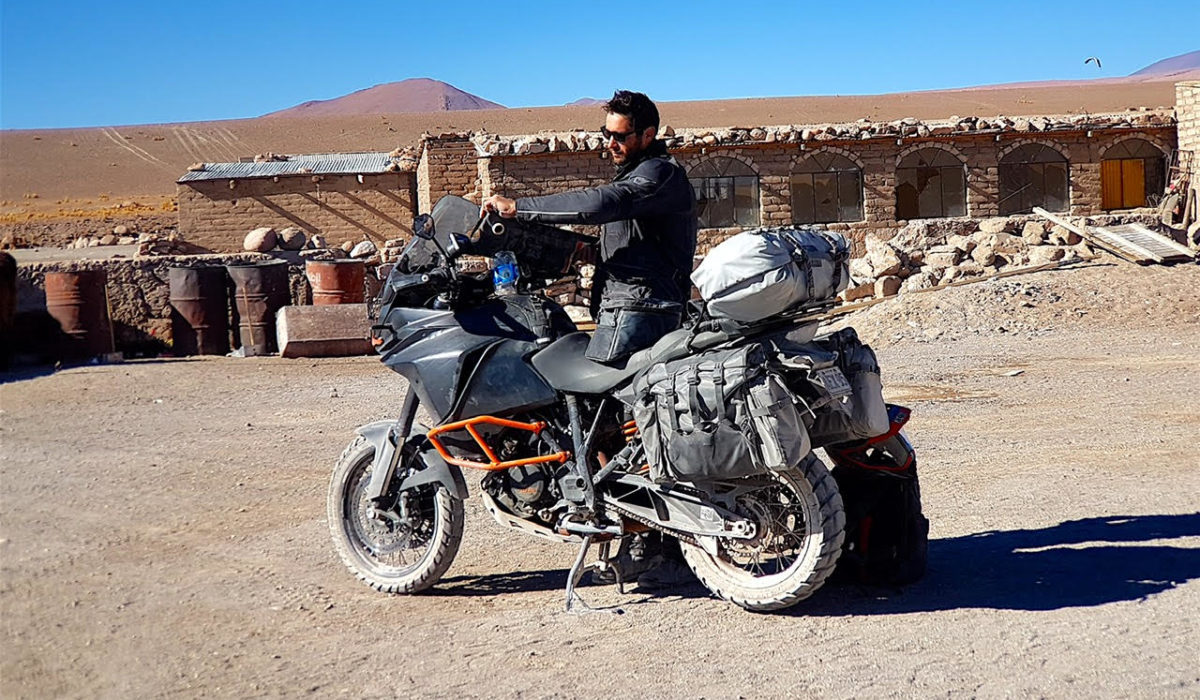
TO CONCLUDE
I believe that South America really is for every motorcycle, a fantastic amusement park, full of
emotions and roads that only you can imagine in your dreams.
I could never have thought that it could be so spectacular and that it could leave me so fascinated by
its charm.
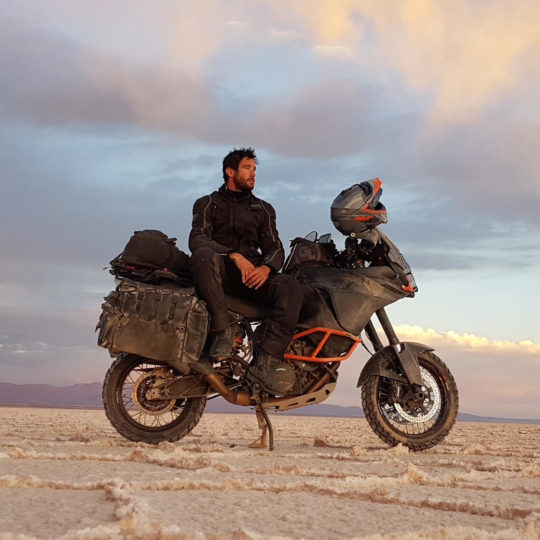
Nato a Oggiono (LC) nel 1980 e cresciuto nella Brianza, la mia vita ha avuto una svolta radicale solo nel 2004, dopo essere emigrato all’estero ed aver conseguito una laurea in ingegneria informatica.
Nel 2005 mi sono trasferito a Los Angeles e nel 2008 a Bangkok; nel 2010 invece ho cambiato residenza in maniera definitiva, scegliendo Sydney come base.
Nel 2015 ho comprato la moto, ho mollato casa e lavoro, ed ho iniziato a girare tutta l’Australia; nel 2016 ho spedito la moto in Sud America ed ho cominciato ad esplorare tutto il nuovo continente e successivamente anche l’Europa.
Dopo aver macinato quasi 170000 km, nel luglio 2019 ho raggiunto l’Italia con la mia compagna di viaggio, chiamata Bronte, una KTM 1190 Adventure del 2013.
Ora, dopo quasi 5 anni di avventure, mi ritrovo a girare il mondo, in sella alla mia moto, come nomade digitale.